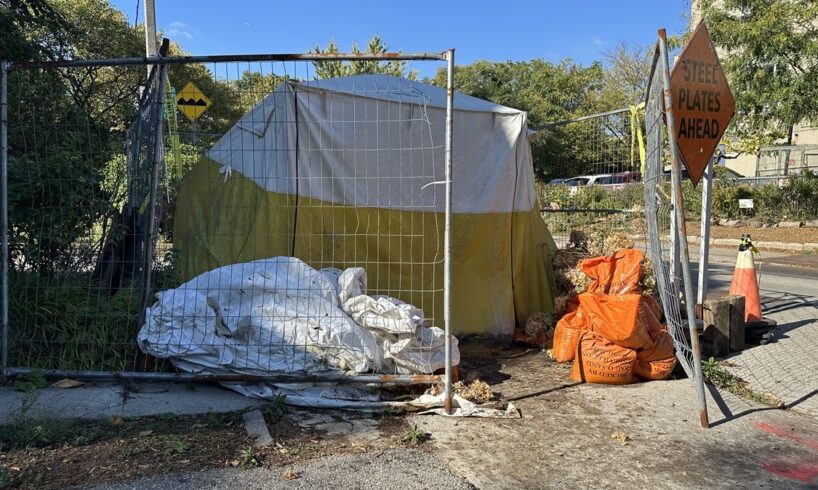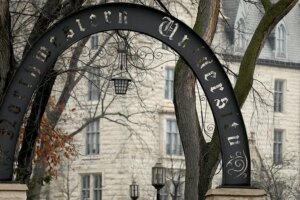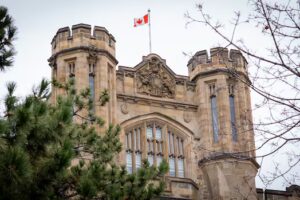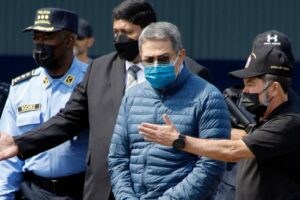
It’s been nearly two years since ancient human remains were found outside a Withrow Avenue home, but City of Toronto officials and archeological experts now say they believe they have found evidence of at least five people buried.
“There’s teeth, there’s different parts of the skeleton that makes determination on age, sex and you can tell if you have multiples of the same piece you know you have different individuals,” Lisa Merritt, an archeologist and the vice-president of ASI Heritage — a consultancy hired by the City of Toronto to assist with the investigation, told CityNews on Tuesday.
“I think we always assumed there would be multiple individuals. It’s likely a communal grave, a communal burial, that would be the tradition to have multiple individuals buried together.”
It was on Jan. 5, 2024, when crews replacing a lead pipe from the 1880s buried under a public sidewalk on Withrow Avenue, just east of Broadview Avenue between Gerrard Street East and Danforth Avenue, came across human bones.
After Toronto police officers were called, the dig site as well as a truck containing soil were ordered to be protected. Provincial coroners and the Ontario registrar for burials exercised their authorities to order the City of Toronto to preserve the remains. An anthropologist determined that the remains were of Indigenous origin.
Heritage Toronto called the area near where the remains were found “one of Toronto’s most complex archaeological sites,” noting artifacts believed to be as old as 5,000 years old and a potential 700-year-old communal burial chamber were found.
Merritt said she and her staff have been going through 35 cubic metres of soil removed from the site, looking for fragments through three-millimetre mesh screens.
She and municipal officials said they’re waiting for the Ontario government to work with multiple First Nations and to approve a plan on proceeding with a detailed investigation.
There wasn’t a definitive timeframe for completion provided on Tuesday, but officials said they hope to have the site on Withrow Avenue excavated in one-metre-square increments and checked by winter. They said it’s likely they’ll only have to dig down 30 to 50 centimetres of topsoil and five metres away in all directions from where the remains were found, depending on the registrar’s directions. Officials noted the discovery of additional remains could stretch the completion date into early 2026.
Bill Shea, the manager of distribution and collection with Toronto Water, estimated the City has spent close to $500,000 on site security. Officials later confirmed $517,000 was spent as of mid-August.
“We have had 24/7 security here since the beginning and we feel that’s very, very important for the City’s sake and obviously for the (First) Nations’ sake,” he said while thanking neighbours nearby for patience as crews work through the lengthy process.
City staff said 10 out of 11 First Nations stakeholders have agreed on a way forward under the burial investigations process. Shea said the Haudenosaunee Development Institute (HDI) hasn’t agreed with the process.
“We reached out to HDI to sign a monitoring agreement. They are welcome to come anytime to monitor this investigation. They have other ideas about what needs to be done first,” he said.
A news release issued by HDI earlier this year said the site is a “designated Burial Site Investigation zone and part of a broader area built on top of a historic Haudenosaunee village. A city-installed plaque erected across the street openly acknowledges this. Despite many pleas, the Haudenosaunee have been denied any meaningful role in overseeing the treatment of their ancestors,” the previous statement said.
The Mississaugas of the Credit First Nation previously said they have treaty rights for the area.
Tanya Hill-Montour, an archaelogical community monitoring supervisor with the Six Nations of the Grand River, is among the First Nations representatives watching over the process. She said she and others want to ensure there is collaboration and that respect is shown throughout the excavation.
“We’re moving in a positive direction for the ancestors,” Hill-Montour said.
Hill-Montour emphasized the area is an important historical zone for First Nations and encouraged people to be aware of that history.
“Work with us, let’s all try to understand each other, there’s a whole period of time that’s here, that’s present, that unfortunately had to be discovered and recovered … we need to work together,” she said.
As development continues in Toronto and elsewhere in Ontario, Hill-Montour encouraged the Ontario and federal governments to have a broader strategy in place.
“We need to have these contingency plans in place so we can enable the support for the First Nations, property owners and even the bereavement authorities,” she said.





